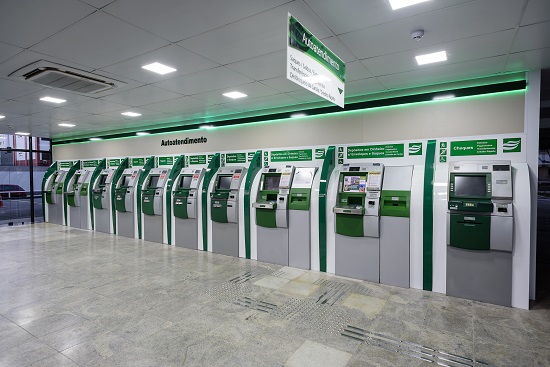Construction of a banking automation system fully implemented in a distributed systems architecture on the Java Enterprise platform for the Bank of State of Sergipe - Banese.
Project Details
A solution was developed to carry out banking transactions, in a unified manner, in all the bank’s customer service channels:
- Banking Branches and Service Points;
- Internet Banking;
- ATMs;
- Banking Correspondents;
- Call Center;
- Banking networks;
- Integration with customers.

Project Requirements
Some functional features of the solution:
- Implementation of banking transactions independently of the service channel. E.g.: The security payment transaction is implemented once and made available to service channels via ATM, Internet Banking and Caixa.
- Definition of the location and form of transaction processing. Through rules defined by the bank, the transaction will be carried out on the client station, on the branch server, on the central server or can be transferred to backend systems.
- Online synchronous, asynchronous or batch integration with backend systems. Backend systems can be on the most diverse platforms (Ex: mainframe IBM, Unisys, Windows, Linux, etc.).
- Asynchronous replication of transactions, through a JMS (Java Message Service), for mirrored processing of transactions on a central server or for asynchronous inter-agency processing.
- Electronic Cash Reel, enabling the elimination of forms and use of the printed reel in one copy, for issuing a customer receipt.
- Single security service for all service channels, integrated with JAAS (Java Authentication and Authorization Service), with authentication services at up to two levels, authorization, audit log, personalization of user profiles, with the possibility of integration with an LDAP server (Ex: Microsoft Active Directory). Other bank systems can be integrated to utilize the iBanking security system.
- Fault tolerance at all levels of the solution.
Some of the technical features:
- Fully developed using the Java Enterprise (J2EE) platform and open standards, being a solution independent of hardware platform, operating system and database.
- Multilayer architecture, isolating business objects from the interface and data access.
- Support for distributed processing and server clustering through the use of Enterprise Java Beans technology.
- Support for GUI (Java Swing) and Web Browser client applications.
- Interoperability, allowing integration with heterogeneous legacy environments.
- Automatic version update of GUI client applications via Java WebStart.
- Parameterization of transactions, documents and user interfaces, for many device types, through XML.
What were the technologies used?
- Java 5
- J2EE (Java 2 Enterprise Edition)
- EJB (Enterprise Java Beans)
- JSP (JavaServer Pages)
- JMS (Java Message Service)
- JBoss Application Server
- WebLogic Application Server (BEA Systems)
- YourKit Java Profiler
What were my responsibilities?
- Help to define the solution architecture;
- Help to define the application design;
- Help to define the design of the application’s web interface;
- Help to define the design of the application’s desktop interface;
- Develop the solution infrastructure, upon which functionality is implemented. The infrastructure includes a framework for automatically generating the user interface of all transactions, for any type of interface, in Java Swing for the desktop, or in Html for the web.

